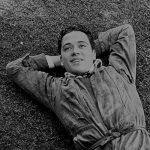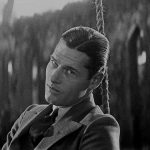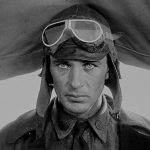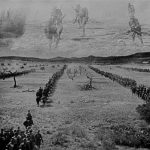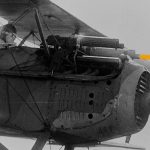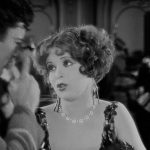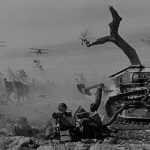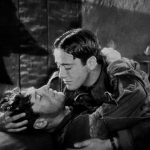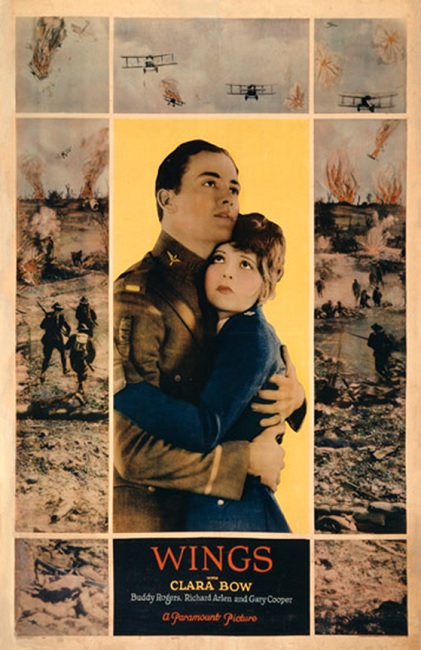

Wings – 1927 – 1928
Wings was the first movie to win the Academy Award for Best Picture, although back then it was actually called Outstanding Picture. (The term Best Picture wasn’t used until 1962)
Interesting to note: It actually won for 1927 – 1928. They didn’t start using a single year until 1934.
This was the only silent film to win the prestigious award until The Artist in 2011. As such, it had music throughout the entire film, which was re-orchestrated and recorded when the film was restored. In theatres, the soundtrack would have been played live on a pipe-organ as the audience watched the film.
The movie gave top billing to Clara Bow, who did a fine job as Mary Preston, though she was very much a secondary character in the plot. At times, it almost felt like the writers went out of their way to give her character more screen time than the plot deserved, simply because they had a big name actress. The story was really about Jack Powell and David Armstrong, played by Charles “Buddy” Rogers and Richard Arlen, respectively. They portray ace fighter pilots in WWI who are from the same home town, and who happen to be best friends.
There is a strange little sub-plot that takes place in the middle of the film, in which Mary joins the army as an ambulance driver and is stationed in France, where Jack and David are on leave. This really didn’t make much sense because they made a point of showing that Mary is a terrible driver. She runs into Jack at a party, but he is so incredibly drunk that he doesn’t even recognize her. The images of bubbles floating up all over the screen are amusing, and are meant to show how intoxicated Jack is on champagne. Mary gets Jack back to his room and starts to change back into her military uniform. But the men bringing Jack’s orders saying that his leave is over see her undressed in his room. For this, she is discharged from the Army and sent home. This sub-plot seemed a little unnecessary. But they had a big name actress and did what they could to use her as much as possible. Another reason for this scene, surprisingly, was that it was an opportunity to show Bow’s bare breasts, if only briefly.
The rest of the plot is fairly simple, and you end up feeling for the characters when it reaches its climax. You see tragedy coming and know that they can do nothing to avoid it. When Armstrong’s plane is shot down behind enemy lines, he steals a German plane and uses it to fly back to friendly territory. Of course, it is easy to see where the story goes from there. At the sight of an enemy plane flying towards them, they send Powell, their best fighter pilot, up to shoot him down. Unfortunately, he succeeds, not knowing until it is too late what he has done. He lands and finds his friend dying. The grief he feels for his friend overwhelms him and he weeps for his comrade. And at the end, he returns home to find Mary waiting for him. Sure, all the loose ends were tied up, giving the audience closure, but it is a bitter-sweet end. There is no denying that this is good story-telling.
I was actually surprised by the special effects of a silent film from 1927. The complex aerial battle sequences were exciting to watch. When a plane was shot down, they used a special technique called the Handschiegl color process for flames and explosions, making them appear red and orange in a film that was otherwise completely black & white.
Interesting note: Gary Cooper received fourth billing, even though he only had a few minutes of screen time before getting killed off. I think I read somewhere that those few minutes were enough to really launch his career.
Rogers and Arlen share one of the earliest examples of a same-sex kiss on the big screen, though it is fraternal (during Arlen’s death scene) and not romantic. But even more “scandalous” than that for an old film is the amount of nudity! Naked men in the background of a scene at the recruiter’s office, and Clara Bow’s bare breasts! I wouldn’t have thought those things would have been allowed on the silver screen in 1927. But apparently, the Motion Picture Production Code, restricting nudity in film, wasn’t enforced until 1934.
By today’s standards, it is difficult to see the silent film as anything but quaint or even nostalgic, a visit to a bygone era. But the story was fairly well written. The action sequences were surprisingly well done, considering the filmmaking technology of 1929.
I have no real complaints about the movie, though I will take a moment to make one final comment on the acting in the film. The style of acting was completely different than the modern style of acting. Sound is a great factor used to convey a character’s emotion. An actor can use his voice to change a statement from happy to sad and anything in between with a simple change of inflection. However, in a silent film, that tool cannot be used.
The result is that actors in silent films must rely on over-exaggerated facial expressions and body language to convey what the voice cannot. Therefore, if someone is excited, they do not look simply excited. They look insanely, deliriously excited. If someone is sad, you really have to be able to see that frown, if not those tears. Unfortunately, subtlety gets thrown out the window. But that was the style of the silent era. It had to be in order for a film to touch an audience emotionally.
All in all, the movie was well acted and fun to watch. It was easy to follow and the aerial combat scenes were very well done. I think it was a worthy start to the Academy Award category that would eventually be known as Best Picture.
